MARKET OVERVIEW
The Global Processed Meat market is expected to be one of the highly diversified elements within the food industry. Due to this, a high volume of products will be engaged in the market, thus warranting the usage of multiple methods for preservation and processing. This kind of market will engage products like sausages, bacon, ham, ready-to-eat meals, and others alike that appeal to customers with the convenience of no compromise in taste. Demand will, therefore, increase with changing lifestyles and consumer behaviour for processed meats-from overarching trends in how people think about meals and dining experiences. There is innovation beyond traditional products to meet changing dietary preferences, including plant-based alternatives and healthier formulations.
Global Processed Meat market will be very effective with the following boosters of technological innovation along with food processing techniques, improving quality and safety standards. Manufacturers will almost certainly invest in good-quality facilities to ensure that their product meets stringent health requirements and expectations of consumers. As food safety become a significant concern, transparency will become an important element of production practice, which will impact consumer buying behaviors. Traceability shall be at the center for companies incorporating more sustainable supply chain practices to improve the authenticity of processed meat products in health-conscious consumers’ minds.
Consumer demand shall push the Global Processed Meat market towards greater flavor and product diversity. An amalgamation of traditional recipes with modern culinary techniques shall provide unique products that cater to different palates. This is also set to bring in the scope for the manufacturers of processed meat to venture out into new markets and expand their businesses. The cross-cultural products are likely to grow in the market by combining elements from different regions to attract the adventurous eaters. It is bound to be an increasingly integral part of market trends as the world becomes more interdependent.
Sustainability would come among the key concerns in the Global Processed Meat market. Consumers will demand that they have products up to their principles, and companies will have to concern themselves with looking into sustainable sourcing of raw materials and more efficient production methods. Companies will consequently diversify towards environmentally friendlier practices from farm to table in order to meet consumers’ expectations and hence improve their brand reputation. This embrace of sustainability will spur consumers who increasingly look for brands that are genuinely committed to ethical practices.
Regulatory frameworks regarding the Global Processed Meat market will evolve to cater to consumer concerns about health and promote better dieting. Governments will now be strict on food labeling, sodium intake, and additives, and companies will reformulate their products according to regulatory requirements. This regulatory environment will propel constant innovation within the sector since companies will have to adhere to new standards in flavor and quality. The push for healthy products will be another pressure to product development since processed meat is stretched to its limits.
As the Global Processed Meat market keeps on changing, there are risks of competition arising from alternative sources of protein. However, flexibility and innovation for the market will position it to stand firm for a long period in the food industry. With new trends and consumer demands, the Global Processed Meat market will therefore place itself in a dynamic future of culinary development that will have shaped diverse food consumption landscapes in the years to come.
Global Processed Meat market is estimated to reach $463.7 Million by 2031; growing at a CAGR of 4.8% from 2024 to 2031.
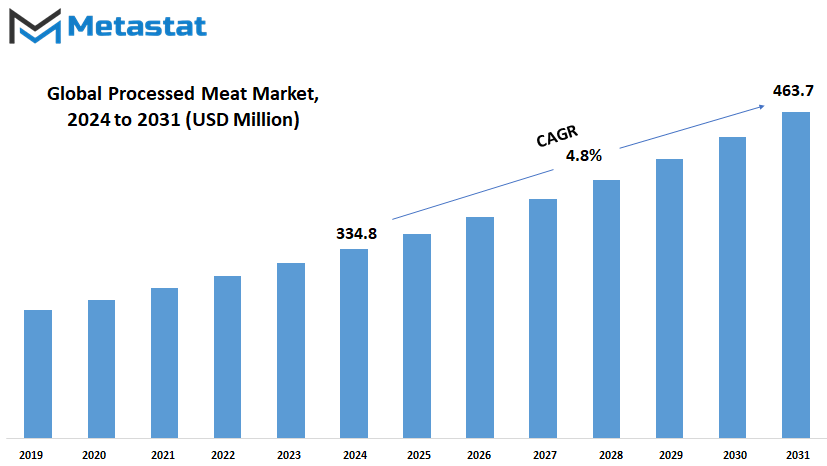
GROWTH FACTORS
The Global Processed Meat market continues its growth while consumer preferences are changing and technology rapidly advances, redefining the industry. The market includes an extensive range of products from sausages and bacon to deli meats and canned goods. Continuing the trend toward more hurried lifestyles and convenient food options, alongside a continuously rising demand for them, has brought processed meats very popularly into consumers’ lives across the world.
The major growth factor for this market has been the growing urbanization and shifting dietary habits across the globe. The increased necessity to hasten quicker lifestyles has meant more people are apt to hit the roads for living, leading to higher demand for speedy meal solutions and an easy way of incorporating protein into diets. Convenient sources of protein in processed meats are proving attractive for time-stressed consumers who can easily make them feature in a variety of meals.
Another important growth driver for the market is innovations in product development and packaging. The manufacturers are constantly competing to introduce new flavors, textures, and healthier alternatives to cater for the changing wants and needs of consumers. In terms of improvements in packaging technology, shelf life of the processed meat products is highly increased, which had otherwise become less accessible leading to more waste.
However, challenges assault the market and could dampen its growth rate. Consumers became worried over the health aspects related to processed meats in the past century. This owes to the fact that studies tended to confirm that a high intake of these products is related to several diseases. Consumers opt to take less or even choose healthier alternatives in this regard. Manufacturers have responded to the needs of consumers by coming up with healthier processed meat products that contain less sodium, nitrates, and artificial additives.
Another reason that market growth may be hindered is increasing demand for plant-based meat alternatives. As consumers demand lifestyles and diets that are increasingly more vegetarian or flexitarian, so too will demand for traditional processed meats in competition with those new innovative plant-based products.
Future golden opportunities for the market are likely to stem from technological advances in the technique for food processing and preservation. These will allow the production of healthier, more sustainable products that fit consumers’ preferences. Even the industry might be altered by lab-grown or cultured meat, opening up a possibility of even more environmentally friendly and ethically produced products than those traditional processed meats.
A dynamic Global Processed Meat market has further scope to develop and change in the coming years due to changes in the demand of consumers, health considerations, and technological innovation. Challenges remain, but crucial for the future growth and prosperity of the industry are also its abilities to innovate and respond to the current market trend.
MARKET SEGMENTATION
By Type
The Global Processed Meat market keeps changing with the ever-increasing dynamic consumer preferences and technology. For instance, the processed meat market is so broad that the products range from one consumer taste to another and many more.
Among the high-demand lunchmeats among the consumers include the lunch chicken; therefore, innovation will be witnessed in flavoring and packaging for health-conscious buyers. For instance, the manufacturers might consider using organic or free-range chicken due to a highly increasing demand for premium products.
Canned luncheon meat will probably be subject to some sort of reformulation considering one particular health issue or another. They could reduce sodium levels for the product to be in favor by a larger population or they might incorporate plant-based ingredients.
Hotdogs have been seen to exist for decades, and one might soon witness them in gourmet packaging. Artisan hotdogs made from quality meats and exotic flavor profiles will definitely rule the shelves of stores.
Pre-cooked chicken, valued mainly on the basis of convenience, should better be introduced with tastier and juicier textures and flavors. Advanced processing technologies are envisioned that will preserve the fresh flavor as well as moisture of the chicken.
Sausages and bacon, valued for their respective rich flavors, should indeed fall in line with the pressure of health-conscious consumers. Replacements will probably be low-fat products or versions prepared from less fatty meats.
Others Processed Meat This category of processed meat shall expand to include innovative products that bring together traditional meats and plant-based proteins. Flexitarians and consumers bent on cutting back the consumption of meat will accept this innovation.
Changing rules and regulations associated with health will also force the market to walk on a totally new road. Companies will heavily invest in research and development to create lines of healthier processed meat with lower levels of preservatives and additives.
International tastes are always merging, so global flavors are entering into the processed meat market. The cross-cultural exchange will ensure that choices are even wider for the increasingly global palate.
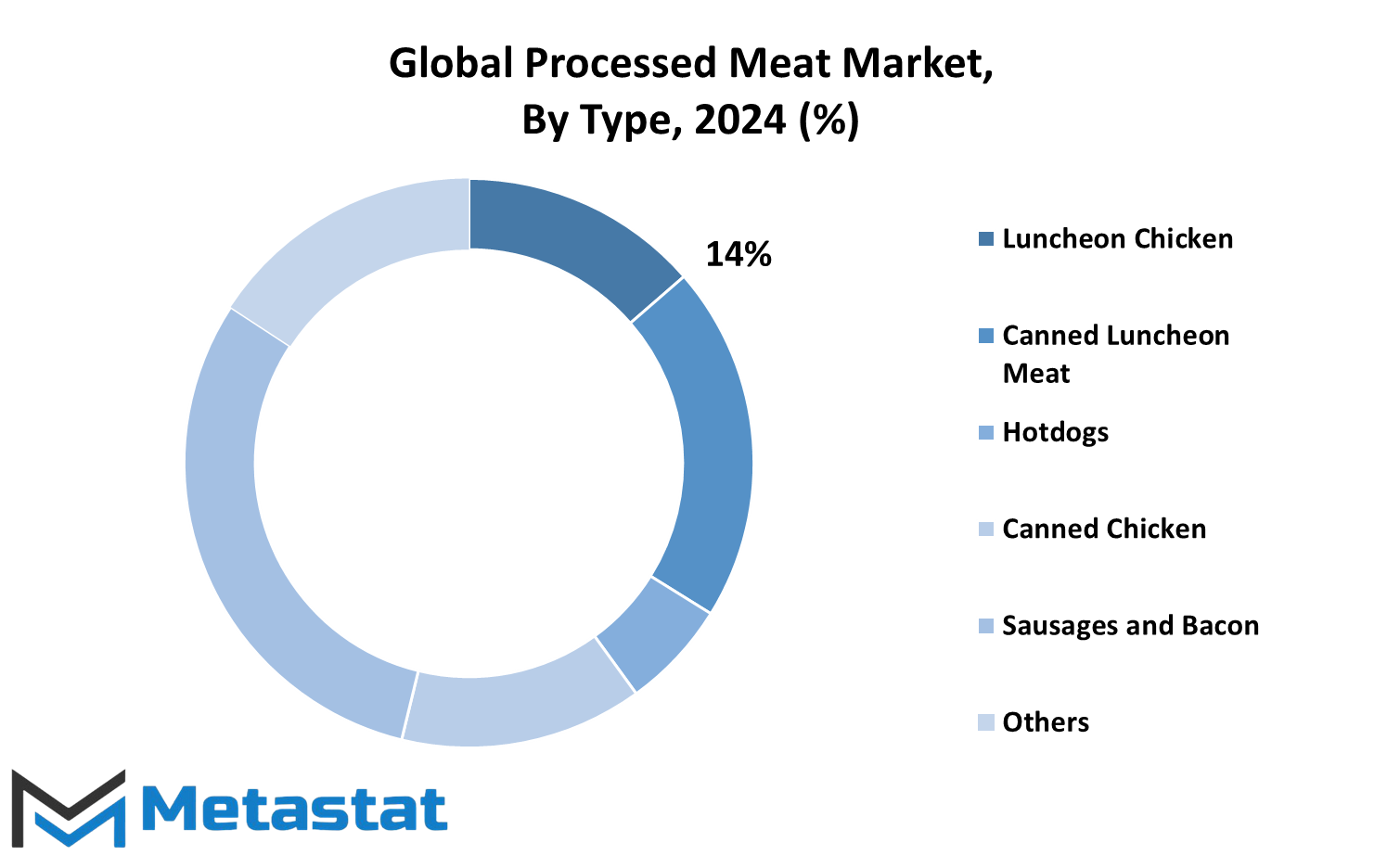
By Sales Channel
The Global Processed Meat market is now expanding due to a change in consumer tastes and lifestyles across the globe. This sector comprises various products, including sausages, bacon, canned meats, and deli cuts. Today, when speed and efficiency are increasingly desired by people for their meals, convenient meal options like processed meats are simply one of the solutions providing quick protein sources for busy households.
In the future, there will probably be changes in how these items reach the consumers. For many years now, supermarkets have been the initial points through which the processors’ market get their processed meat. It is from these structures that the customers get to see several brands and compare the prices at which the products are being sold. Supermarkets will probably enhance their stock by evolving more specific sections on the artisanal and high-value processed meats, considering the popular demand for gourmet food.
Convenience and grocery shops also are a very important part of the landscape where processed meat will be considered. The small shop offers increased convenience for customers looking for an easy sandwich or lunch to take on the run. Where urban populations are on the increase and time is increasingly more valuable, convenience shops will grow by offering more ready-to-eat processed meat items. Perhaps a few more varied sandwiches, or possibly even individual portions, helping to meet the demand of eating on the go.
Online shopping, while being a byproduct of the birth of e-commerce, will now enable consumers to source all their processed meat needs with the click of a mouse. Online retailers will go that extra mile and even raise the rate at which the delivery systems are developed and perfected to ensure the safe transportation of all perishable goods. Virtual butcher shops may surface, allowing customers to get custom packages of processed meats delivered right to them.
While Global Processed Meat faces some of the challenges in terms of possible health issues and changing consumption patterns, it also presents growth as well as innovation in a variety of sales channels. This industry will, therefore, continue changing to fit consumer needs and new technologies, and one product lines will suit all tastes and lifestyles worldwide.
|
Report Coverage |
Details |
|
Forecast Period |
2024-2031 |
|
Market Size in 2024 |
$334.8 million |
|
Market Size by 2031 |
$463.7 Million |
|
Growth Rate from 2024 to 2031 |
4.8% |
|
Base Year |
2022 |
|
Regions Covered |
North America, Europe, Asia-Pacific Green, South America, Middle East & Africa |
REGIONAL ANALYSIS
The Global Processed Meat market shows great diversified trends regionally, since the market and consumption habits, together with the production techniques, vary significantly based on regions. The segmentation of this market into five distinct regions includes North America, Europe, Asia-Pacific, South America, and the Middle East & Africa. Each unique geography drives the processed meat industry in that region, providing unique opportunities and challenges.
North America, including the USA, Canada, and Mexico, will be a high base for consumption of processed meat. Growing demand for convenience food, primarily driving the region, will continue to fuel growth. A strong interest in health and wellness trends will encourage producers to provide healthier alternatives of processed meats such as reduced sodium and fat. As preferences turn toward sustainable and ethically sourced products, one can expect companies to heed this shift by adopting transparent supply chains and improving the product label-as a reflection of their commitment.
Europe, which consists of the UK, Germany, France, Italy, and the Rest of Europe, is one of the most diversified regions. Homemade and traditional processed meat product lines will continue to be in demand more in mature markets with strong cultural culinary heritages. However, convenience and new flavors are more appealing to the younger generation and hence the market will have both traditional and new entrants. Consumers who pay attention to health will remain demanding of alternatives, and so the market will have both plant-based processed meat substitutes along with the traditional offerings.
The Asia-Pacific region, which comprises India, China, Japan, South Korea, and the Rest of Asia-Pacific, is now on the threshold of a processed meat market. Rapid urbanization and a change in lifestyles will be the driving factors that can boost demand for processed meat in the future. The middle class emerging or already strong in nations such as China and India might favour Western-style processed foods. Traditional meat products, however, will remain their strong share-holders. The greatest challenge to companies will be how to weigh their priorities toward respecting local preferences against pressures for global trends in health and sustainability.
Meat production potential is high across the significant agricultural resources in South America, particularly Brazil and Argentina. The growth in processed meat in these markets is more likely to be driven by a thriving export sector, with key opportunities in beef products. Product development will remain in the hands of regional taste and culinary traditions with preference for home-style flavors, yet with a trend toward convenience and variety.
It is expected to growth steadily with urbanization and population growth in the Middle East & Africa region-comprising of GCC countries, Egypt, South Africa, and the Rest of the region. In any case, cultural problems will shape product offerings significantly since adherence to dietary laws importantly influences meat consumption. More demand for processed meat compliant to be halal will give companies the opportunities to tap into this essential market segment more willingly.
The Global Processed Meat market will change with a difference from region to region as consumer preferences, cultural preferences, and economic needs vary. Companies will have to be dynamic as they have to respond to regional trends wherein health, sustainability, and convenience will be at the forefront.
COMPETITIVE PLAYERS
Global Processed Meat Market The Global Processed Meat market is very dynamic, with many strong players driving the industry forward. The key players of this market include Tyson Foods Inc., Conagra Brands, Inc., and Foster Farms. They are actually controlling production in the processed meat market and creating trends adopted by other companies. Each has established a different approach to winning consumer attention with the positioning of products that are high on quality, sustainable, and innovative.
Truly, Tyson Foods Inc. is really setting itself apart with its commitments to sustainability and animal welfare. Since more consumers are gaining awareness of the ethics of their food choices, Tyson has evolved to be the company continually improving its process and is proud of its transparent levels across its supply chain. Conagra Brands, on the other hand, diversified through the ranges that they offered the consumers across numerous markets. This company was able to attract more consumers to its brands by offering healthier options and plant-based alternatives along with traditional processed meats. It is a move that caters to the changing consumer preferences toward health as well as convenience.
Foster Farms and Goya Foods, Inc. target specific demographics, which is made clear by focusing on the business. Foster Farms appeals to the health-conscious consumer with fresh and all-natural products. Goya Foods appeals to the Hispanic consumer base in catering to an array of processed meats, thus showing the importance of cultural relevance in marketing and development to maintain their loyal customer base.
Johnsonville, LLC and Kirkland Signature (Costco) are two brands that have very effectively shown how a good product line with brand loyalty ensures successful attraction of consumers. Johnsonville emphasizes delicious flavor in the sausages and Kirkland emphasizes quality at a price.
Smithfield Foods, Inc. and Kraft Heinz dominated the market as these firms could rely on their wide distribution networks and brand name. Smithfield deals with a diversified product line apt for wide variety tastes and preferences of people, whereas Oscar Mayer continues to innovate new flavors and packaging that would make the brand continue to look fresh in the minds of young adults and old adults, respectively.
In the future, the Global Processed Meat market would be an evolving aspect with the above companies catering to consumer demands in the line of increasing health and sustainability consciousness. Companies must innovate constantly with new product lines and better practices. This forward-looking approach will ensure that such industry leaders will stay in the limelight, answering consumer needs and sustaining a competitive edge. As the market continues to grow, it is more than likely that the strategies implemented by these major players are going to shape the future of the Global Processed Meat market.
Processed Meat Market Key Segments:
By Type
- Luncheon Chicken
- Canned Luncheon Meat
- Hotdogs
- Canned Chicken
- Sausages and Bacon
- Others
By Sales Channel
- Supermarkets
- Convenience and Grocery Stores
- Online
Key Global Processed Meat Industry Players
- Tyson Foods Inc.
- Conagra Brands, Inc.
- Foster Farms
- Goya Foods, Inc.
- Boar’s Head Brand
- Johnsonville, LLC
- Kirkland Signature (Costco)
- Smithfield Foods, Inc.
- Kraft Heinz (Oscar Mayer)
- Perdue Farms Inc.
- Seaboard Foods (Daily's Meats)
- Campbell Soup Company
- Danish Crown AS
- Marfrig Global Foods
- Land O'Frost
WHAT REPORT PROVIDES
- Full in-depth analysis of the parent Industry
- Important changes in market and its dynamics
- Segmentation details of the market
- Former, on-going, and projected market analysis in terms of volume and value
- Assessment of niche industry developments
- Market share analysis
- Key strategies of major players
- Emerging segments and regional growth potential



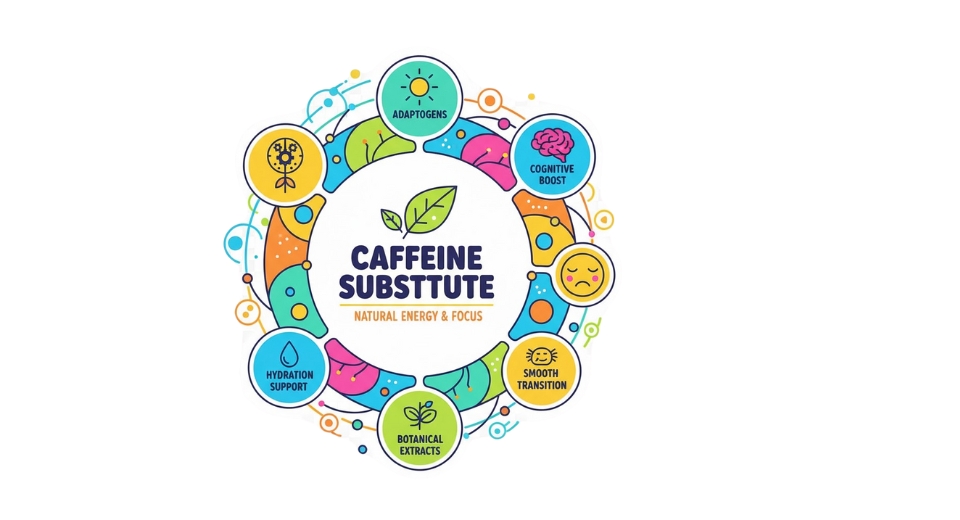
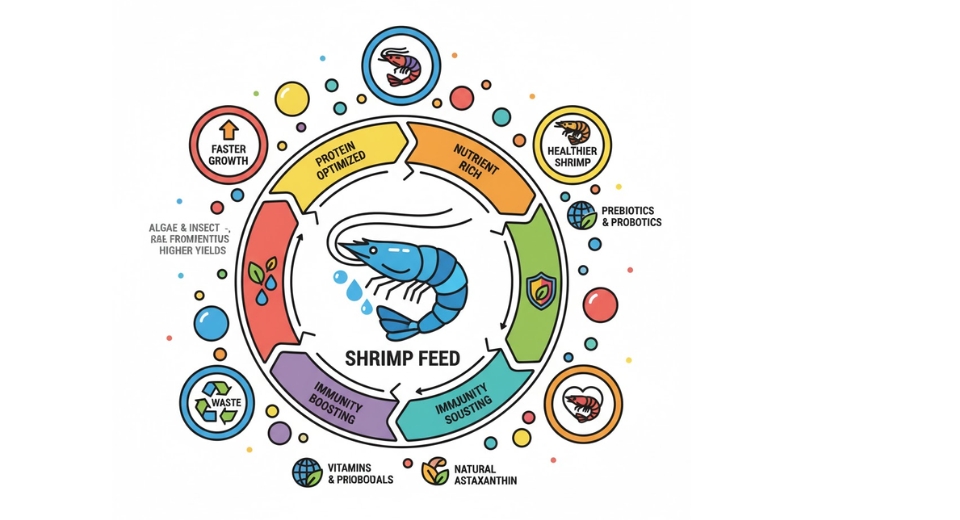
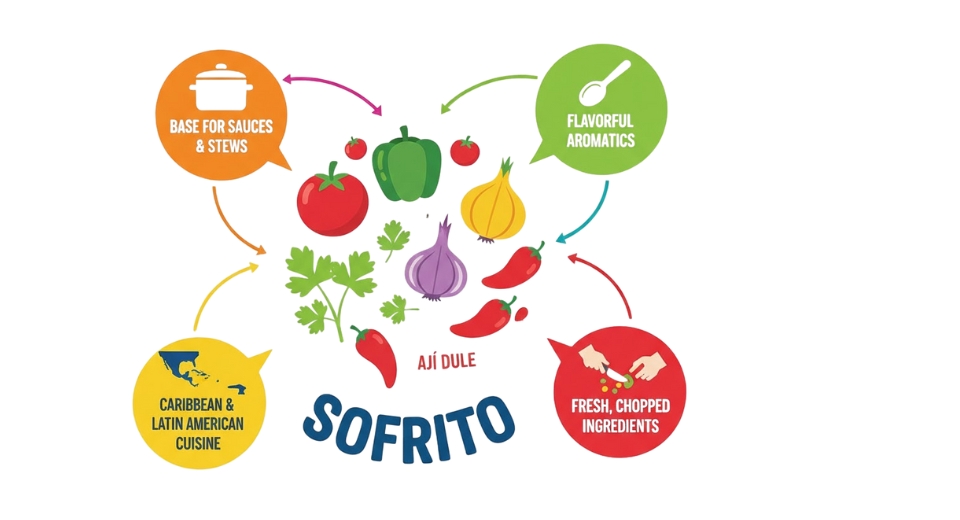
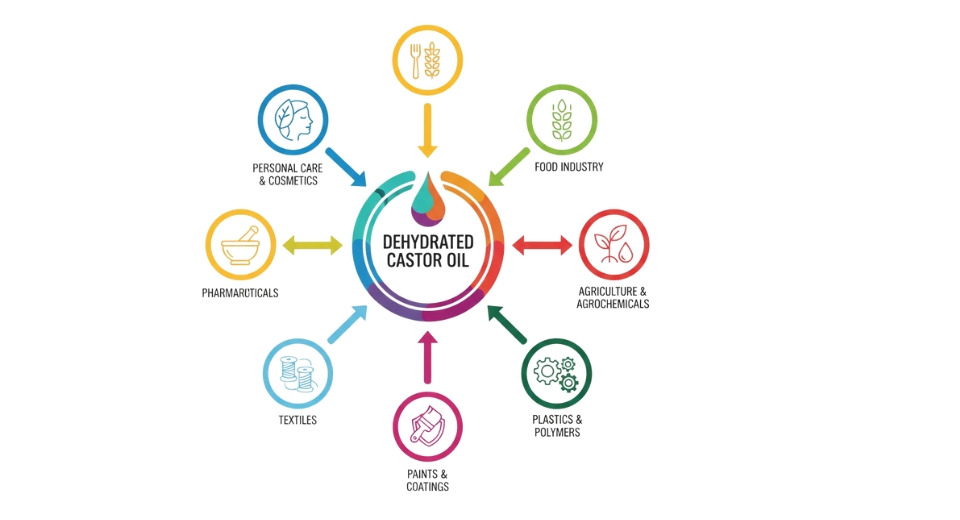

 US: +1 3023308252
US: +1 3023308252






